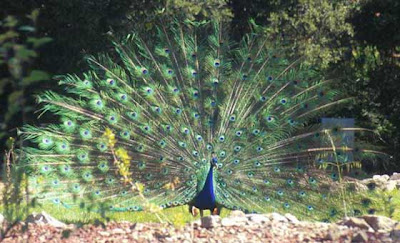Website: http://www.dirosaart.org/
After hearing about the di Rosa Preserve from several people since moving to the Bay Area, including my parents, I decided to make the trip out for my birthday, which coincided with spring break. I did not know what to expect, except for Bay Area contemporary art on a vineyard, it sounded like a perfect combination for me; wine and art, bring it on! We made a reservation for the “Discovery Tour”, supposedly lasting two hours (but wound up being more like three). The grounds and building upon arrival were spectacular with the 35-acre Winery Lake hugging the parking lot, it seemed the day was off to a great start. Entering the “Gatehouse Gallery” reminded me of many of the contemporary galleries in Chelsea with clean lines and poured concrete floors. The art in the gallery was a combination of works from the permanent collection and a rotating exhibition space that is currently showing, MFA Selections – A Salute to Emerging Artists from Bay Area Master’s of Fine Art Programs and will be up through June 12, 2010. The work was strong but did not indicate which programs the students were attending, which I thought was unfortunate, but maybe that is just me and my picky attention to detail.
Another contemporary gallery space was welcomed and the permanent collection is housed here. The work ranged in skill, medium, size, etc as well as the presentation model. Some works were given a great deal of space and proper wall texts while others, in particular the photographs were crowded together and merely numbered, correlating to a checklist I would assume, though I found none. There were probably about 300 works in this gallery and there was much to see. There were works by Jay DeFeo, Joan Brown, Bruce Conner, Viola Frey, Robert Arneson, and David Best to name a few. I was not familiar with David Best’s car sculptures, which after researching I now realize the connection to Burning Man and the community effort to make his sculptures, but they were quite fascinating and there were two on view in the collection. I then got scolded for going outside to observe an intricate David Ireland installation with a flying angel sculpture that looked like something out of the Da Vinci Code, but was then led to my favorite aspect of the collection, the residence.
Led in through a precarious stained glass chapel like setting and made to meditate until the docent finally announced what was abundantly clear that the windows were not actually stained glass, but a computer program made to generate the illusion of futuristic stained-glass. This was the awkward part of the residence, but it quickly recovered once being led upstairs to the original house from 1855 that the di Rosa’s inhabited and hung their collection in a salon-style manner. Everything was left as the couple had intended and it was almost like visiting a natural history museum and the experience was eerie, quirky, non-thematic with over 100 works and much fun to see. I like seeing homes and being voyeuristic in general, so this was right up my ally. The architecture of the home is gorgeous as well as the land surrounding it, complete with over 6 peacocks who made themselves known by yelling and flaring their feathers, which left me in utter awe as to how such vibrant colors can actually occur in nature. To me, these were the best works in the collection. The house is surrounded by sculpture in the Courtyard and one can see from a distance the Sculpture Meadow that can be toured beginning in April and looks stunning.
Overall it was a good experience, with a lot of art to see of artists I was not familiar with and gorgeous land, a fun place to visit on a nice day in wine country.
-- MARLY HAMMER












